Introduction to how to start poultry farming in Haryana: Commercial rearing of a variety of domestic birds to produce meat, eggs, and feathers is known as poultry farming. Commercial poultry farming is also very profitable. With the growing presence of large integrated players and the successful implementation of large-scale contract poultry farming, it has evolved from a backyard activity to a major commercial activity. The agricultural sector in our country performs many functions such as raising livestock which is the largest part of the country’s economy.
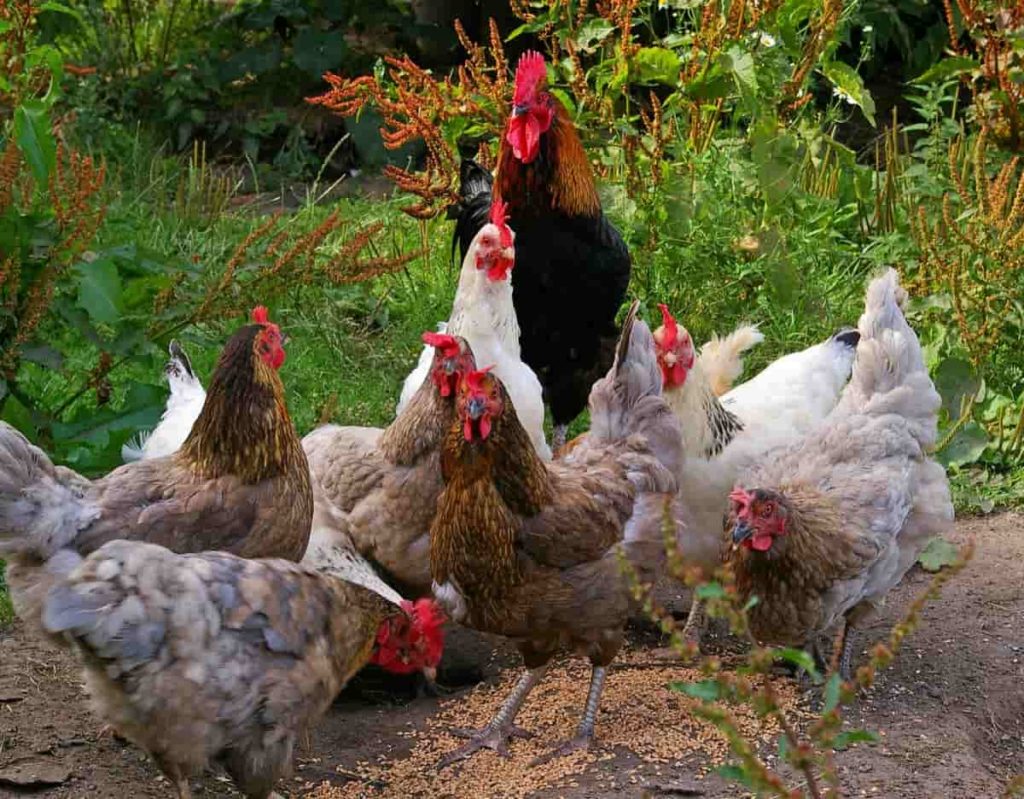
Poultry farming is one of the lucrative agricultural activities and that is why the government is trying to increase poultry farming in Haryana. To encourage farmers in poultry farming, the government has launched a subsidy scheme to provide financial assistance to the people.
Haryana is the largest center of the egg-broiler chicken hub with a turnover of Rs 15,000 crore. Farm poultry dominates in Haryana. The major broiler production hubs are Jind, Panipat, Hisar, Fatehabad, Sirsa, Karnal, Kaithal, and Yamunanagar. In Haryana, there is one government poultry farm in Ambala, Rohtak, Bhiwani, and Hisar.
Guide on how to start poultry farming in Haryana, various methods, housing requirement, area required, feeding management, subsidies, benefits
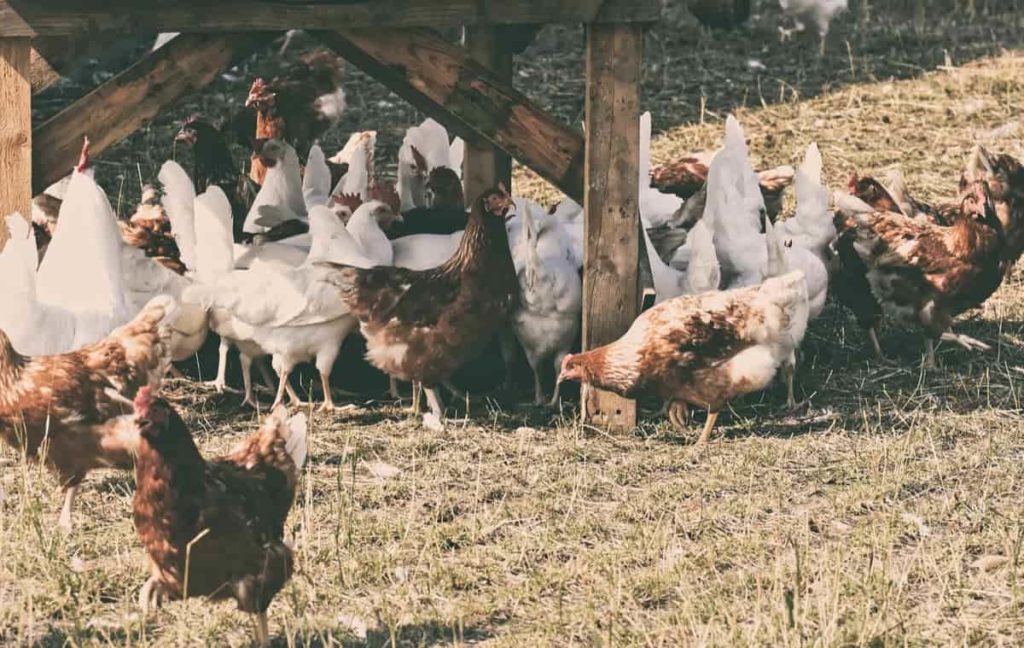
Various methods of poultry farming
The World Watch Institute states, “about 74% of poultry meat and 68% of poultry eggs, 68% of which are produced from intensive poultry farming methods. Free-range farming is another alternative method of intensive poultry farming. It is mainly used for a large number of poultry birds with high stocking density.
There are some differences between intensive and free-range poultry farming methods. The intense poultry farming method is a very efficient system. Which saves land, food, labor, and other resources and increases productivity. In this system, the poultry farming environment is completely under the control of the farmer.
There are also some disadvantages to intensive poultry farming. Some people say that an intensive system poses health risks, animal abuse, and is harmful to the environment. Free-range poultry farming, on the other hand, requires a large amount of space for breeding birds and its production is almost uniform. However, in the case of both intensive and free-range poultry farming practices, the producer must regularly use nationally approved medications, such as antibiotics, to keep poultry birds disease-free.
Layered poultry farming
This is chicken rearing to produce eggs. These birds have genes, which is why they often lay eggs. The layers do not weigh much.
Broiler poultry farming
Broilers are birds that are raised only for meat production. Their genes make them grow faster compared to native chickens and layers. Within 6-8 weeks, broilers can grow to achieve maximum marketable weight.
In case if you miss this: How to Start Poultry Farming in Karnataka
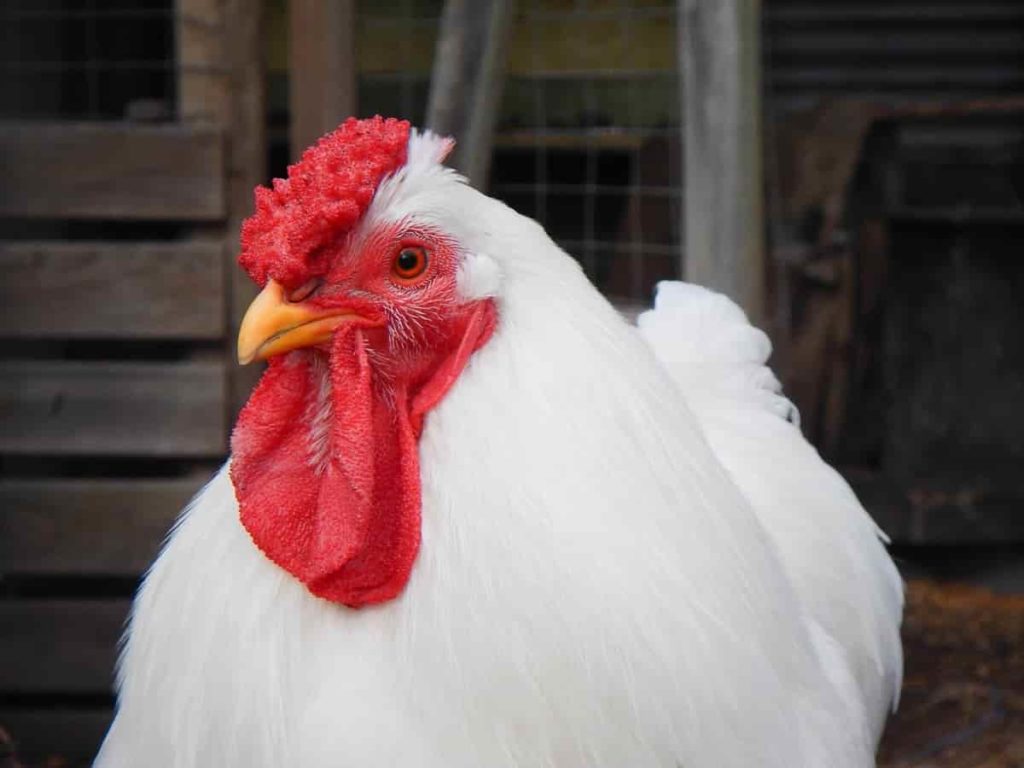
Housing requirement for poultry farming
Good and adequate housing plays an important role in raising all kinds of poultry birds. Some poultry birds grow and live happily on the floor of the poultry house. In terms of birds, you have to make a suitable home for your birds and ensure that all the necessary facilities are available for them. Consider the following aspects when building a home for your poultry birds;
- Always have plenty of space in your poultry house for birds. So that your birds can live happily, grow, and produce. The poultry house has never been crowded.
- A good ventilation system is essential. Make sure the poultry house is well ventilated and you must also ensure adequate flow of fresh air and light indoors.
- If you go for commercial production, keep a reasonable distance from one house to another.
- Clean the house and furniture regularly. Disinfect the house before bringing new chicks to your farm.
- Take necessary steps to prevent all kinds of predators and harmful animals. Adjust the temperature so that the birds do not suffer from excessive heat or cold.
- Have a proper indoor drainage system so that it is properly cleaned.
- It is always a good idea to build a poultry house in a quiet and comfortable place.
Area / Land required for poultry farms
Many factors determine the space required for a poultry farm. However, it mainly depends on the type of poultry farm you are planning to start. There are mainly four types of poultry farms, such as;
- Battery Cage Poultry Farm
- Free Range Poultry Farm
- Semi Range Poultry Farm
- Completely Wild Poultry Farm
For Battery Cage Poultry Farm, you need 4,000 square feet for birds and other farm infrastructure requirements. An additional 2,000 square feet may be required. In a battery cage system, birds will not be able to move or run. You will need 12,000 to 36,000 square feet on a Free-Range Poultry Farm. As in this system, the birds are released in the free range in the fields.
Semi-Range Poultry Farms are a combination of both free-range and cage systems. In this system, the birds are housed in a coop and provided with a small pen/paddock to roam. For this type of form, you will need about 8000 square feet. 2 square feet coupe space and 2 square feet paddock space, which means a total of 4 square feet per bird.
Finally, in the Wild Poultry Systems, birds are raised in a natural environment, such as in an area with many trees. In this type of poultry system, you will need approximately 44,000 square feet of space, with 2 square feet of coop space for birds and approximately 15-20 square feet of free-range space.
Feeding management for poultry birds
Feeding high-quality, fresh and nutritious food always ensures good health, proper growth, and high productivity. Therefore, always feed your poultry birds healthy and nutritious feed includes all kinds of essential vitamins and minerals in their diet. Commercial poultry feeds are available in the market for different types of birds. Feed your birds high quality and nutritious feed as well as always provide them with plenty of fresh and clean water as per their demand.
Feeding Good quality and nutritious food keeps poultry birds healthy and productive. Therefore, good and high-quality food is essential for commercial poultry production. There are many poultry feed companies available in India. They make feed for all kinds of poultry. You can easily use these foods for your birds.
In case if you miss this: How to Start Organic Farming in Jharkhand
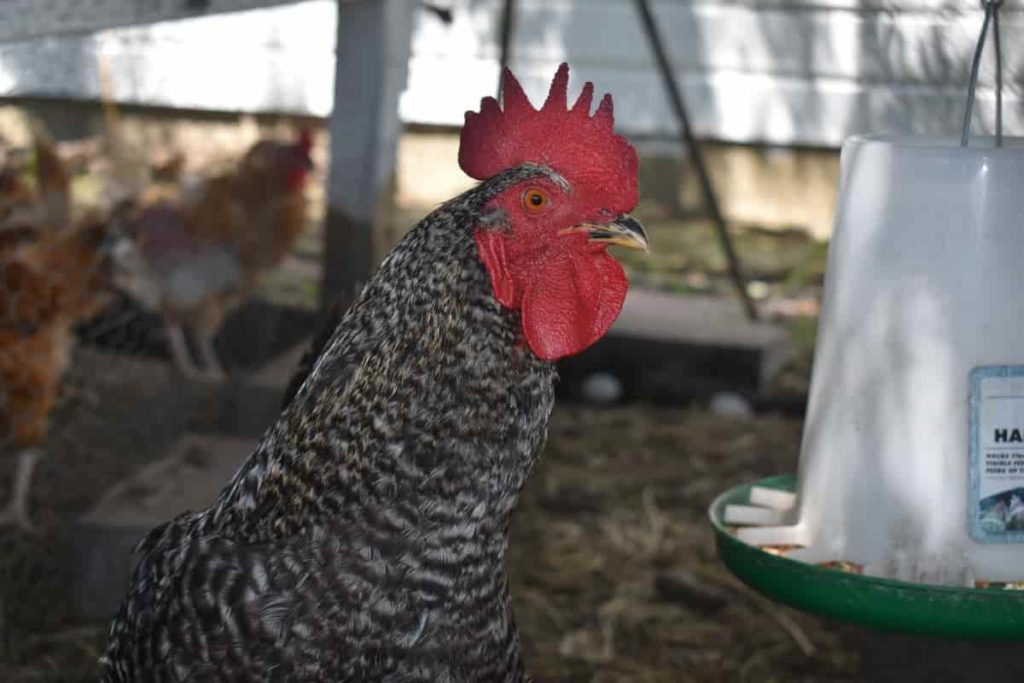
If you want to prepare feed at home, you need to know the essential nutrients in their food. And you have to buy all these elements separately from the market and mix them in appropriate proportions. Try to provide them with fresh and nutritious food as well as plenty of fresh and clean water according to their daily needs.
Care and management for poultry birds
It is important to take good care of your poultry birds. And good management ensures proper growth and production. Diseases are the main threat in poultry farming. Thousands of farmers are suffering due to various diseases of chickens. Therefore, always take good care of your birds and provide them with nutritious food and clean water. Never try to mix contaminated or contaminated food with their normal diet. Vaccinate them on time and stock up on some common and essential medicines.
Poultry farming subsidy in Haryana
- The main purpose of subsidizing farmers is to encourage poultry farming in Haryana.
- Create self-employment opportunities. Through this, the government is creating opportunities for those farmers who do not have their land and are working in other people’s fields.
- The government is working to improve the social and economic conditions of the weaker sections. This is one of the main purposes of subsidizing farmers.
- Improvement and development of generations of poetry.
- Another purpose of government subsidy to farmers is to improve the nutritional status.
Chicken farming subsidies priority
Poultry farming subsidy is being introduced for all farmers in Haryana but the government is looking at small farmers first. The department will initially help the landless, small laborers, small farmers, unemployed people to set up poultry farms and arrange all the necessary things for a good hatchery with the help of the Poultry Subsidy.
Hisar government plans to develop a strong strategy for government hatcheries in Hisar. They are looking forward to low-quality hatcheries with good quality hen in the future. A fund of up to Rs. 30 lakhs will be allocated under the scheme to strengthen the government chicken hatchery in Hisar. The chicken will be provided to the beneficiaries of the government chicken hatchery in Hisar, Haryana.
Features of subsidy for starting a poultry unit
This is a credit-based scheme in which a small farmer can set up a poultry unit in Haryana and the commercial banks will provide funds to the poultry farming unit under agricultural finance These poultry units can sell chicken and eggs anytime, anywhere through cash payment. The government is also providing marketing facilities to poultry farmers.
Who can apply for a government subsidy for poultry farms?
Almost everyone can apply for a government subsidy for poultry farming.
Land Rights – Anyone with less than 2.5 acres of land can participate in this Poultry Hatchery Subsidy Scheme. People who have housing facilities but do not have their animals and used to trade animals for others are also eligible for Poultry Hatchery Subsidy in Haryana.
People living below the poverty line – The Poultry Farm Subsidy Scheme is primarily for those living below the poverty line in Haryana. People with government jobs cannot participate in this poultry farming yojana.
What documents are required for a poultry farm subsidy?
- Aadhar card – Aadhar Card is mandatory for farmers to participate in Haryana Government Subsidy Schemes.
- Ration card – You must submit a photocopy of the ration card with the subsidy application to receive a poultry hatchery subsidy.
- Unemployment affidavit – Through this promising poultry subsidy scheme, the Haryana government is trying to help poor farmers and laborers who are unemployed. Therefore, to reduce the chances of fraud, an unemployment affidavit must be attached.
- Passport sized photo – Attach 1-2 passport size photographs to your poultry farmer subsidy form.
- Local certificate – People of Haryana will have to provide proof of their original place of residence.
- Land paper – Beneficiaries will need to submit a photocopy of their land to open a poultry farm.
Benefits of poultry farming subsidy
The benefits of the poultry farming subsidy in Haryana are given below.
- The department will provide 8 to 10 chickens free of cost to each deserving family from the hatchery.
- In addition, the beneficiary family will also get 2 water drinks or 2 feeder supplies free of cost.
- Two water drinks and two feeders will be purchased by the Deputy Director of the district and the same will be distributed among the beneficiaries.
- The government will also facilitate the transfer of the hens from one place to another place and help poultry farmers.
Important poultry breeds in Haryana
Punjab Brown
Punjab Brown is a popular breed of chicken. Punjab Brown is a multi-purpose breed that produces good quality meat and eggs. Birds are reared in backyard systems and shelter is provided only at night in the form of small walls, mostly made of mud and sometimes wood. The color of the eggshell is mostly light brown and the average weight of an egg is 46.0 ± 1.91 grams.
In case if you miss this: Who Can Buy Agricultural Land In The USA
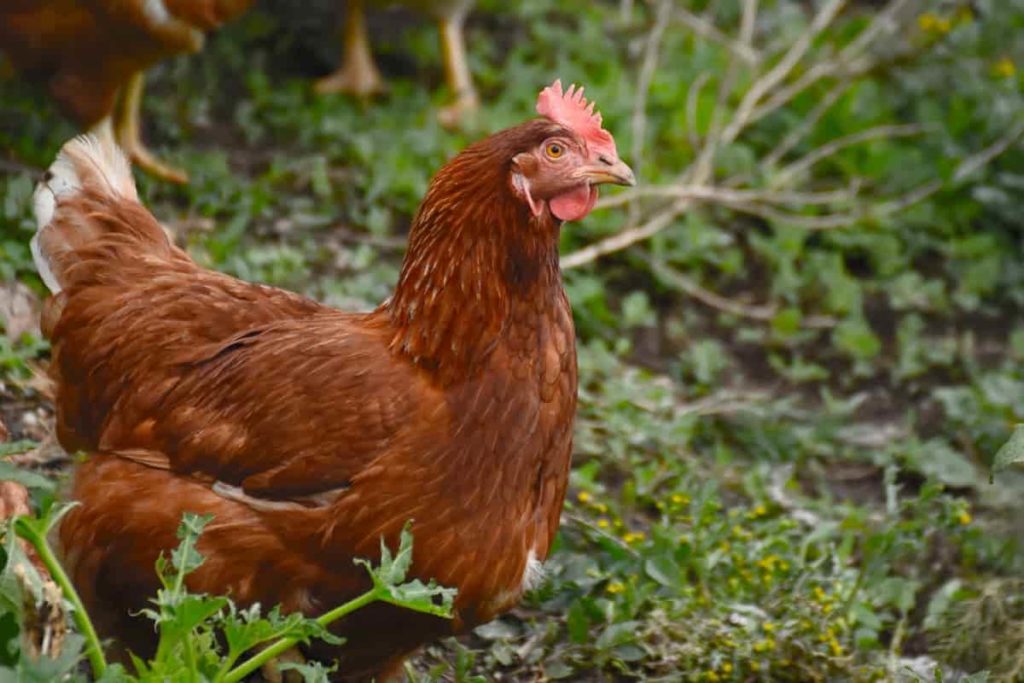
Kuroiler
It is developed by the Keg Farms Group in Gurgaon, Haryana. Kuroiler chickens’ meat is delicious and they lay yellow York eggs. Despite being a tough breed, it does not suffer from low productivity. While the domestic hen lays about 40 eggs each year, the Kuroiler lays about 150 eggs in the same period. Kuroiler hens start laying eggs in five months. Once started, they will lie down continuously for 2 years. Kuroiler hens lay at least 150-200 eggs per year, which is about 40 eggs per year compared to normal Kenji chickens.
Tips for maintaining a healthy and hygienic poultry farm
How you can maintain a healthy and hygienic poultry farm are as follows;
- Keep clean water and clean containers and make sure that water is changed every day.
- Build a safe wall for poultry birds to make sure their food source and food are clean and healthy.
- An adequate supply of calcium and other minerals is necessary for the healthy life of poultry birds.
- Keep your surroundings as clean as possible to ensure healthy birds on the farm.
- Pay attention to the management of parasites and the spread of disease.
- Check the birds daily and vaccinate them against the disease.
- Cleaning poultry houses and equipment is also important. Make sure they are regularly cleaned, washed, and sanitized with warm water, detergent and disinfectant. In addition, all the droppings and dirty litter should be removed and more crowds should be prevented from overheating the place.
- Adequate ventilation is also required in poultry farms for this purpose.
- Maintaining the right temperature and humidity is essential for the survival of poultry animals. To this end, farm caregivers must take care of personal hygiene and cleanliness to prevent infection.
Poultry practice in Haryana (Poultry practice based on stakeholder responses in Haryana)
The use of antibiotics starts before the life cycle of broiler chickens. Day-old chickens (DOCs) are given precautionary doses, parent stocks of broiler breeds are exposed to antibiotics as usual on parent breeder farms. It is also possible that grandparents exhibit non-treatable stocks. Big integrated players like Skylark Hatcheries, Jind, Haryana have their hatcheries.
Typically, small and medium-sized farms receive DOC from such large farms. Regardless of any symptoms of the disease, DOCs are given antibiotics for a few days to counteract the pressure of transport or to prevent possible gut infections, which can be done through an incubator in the hatchery. Enrofloxacin is a commonly used antibiotic. Cephalosporins are also used by a few people.
The broiler parent stock also faces untreated antibiotics to keep the parent stock disease-free and to prevent the vertical transmission of certain diseases to commercial broilers. Although exposure to antibiotics in parent stock is almost a common practice, exposure to antibiotics from grandparents’ stocks cannot be ruled out, a practice that is increasingly being reported in some parts of the world. The use of antibiotic growth promoters (AGPs) is an integral part of broiler farming. Broilers are fed a dose of antibiotics throughout their life cycle.
Broilers gain an average of 2 kg for slaughter in 35-42 days. Their life cycle is mainly classified into three types they are pre-starter (1-10 days), starter (11-25 days), and finisher (26 days later). They are fed a lifelong dose of antibiotics, an integral part of commercial farming in the state, including the government-owned Central Poultry Production Testing Center (CPPTC), Gurgaon, Haryana.
The use of AGP is known to increase feed utilization to achieve maximum weight in the minimum feed, measured as feed conversion ratio (FCR). However, it is also used as an excuse to prevent diseases. Some farmers change the AGPs from time to time in the feed to prevent the onset of resistance and maintain the effectiveness of the AGPs.
Feeds mixed with AGPs are available from feed mills that can also be customized. Feed supplements containing one or more pre-mixed antibiotics are also sold by farmers for on-site use. According to demand, feed manufacturers do not prefer to create feeds without AGPs.
Marketing in poultry farming
If you are going into broiler farming, you need to know who will buy it, how much they will buy, what effect it will have on the market, and how you can benefit from the market. Marketing broilers is not easy because chickens will continue to eat feed. That means you have to keep spending on their feeds until they reach market weight. So, the more broilers you sell, the more you lose.
Layers, on the other hand, are easier to market because chicken eggs can be stored without spoiling. This means you will only sell eggs if you agree. The marketing process in poultry products is very simple. Poultry products are in great demand globally. So, you don’t have to worry about marketing your poultry product. You can easily sell your poultry farm produce at your nearest local market or supermarket. In a word, poultry farming is a very popular and lucrative business idea.
Scheme for starting poultry business in Haryana
The objective of subsidy for starting poultry business;
Self-employment opportunities
The scheme aims to create self-employment in the state and that is why people are given subsidies. The financial assistance will help the people to set up poultry farms. This scheme is meant to take care of the financially weaker sections of society.
Breed improvement
State government people want to produce high-quality poultry so subsidies will help in producing good breeds. The subsidy will help in procuring good quality food for the breed so that the breed will be healthy and the poultry will produce high-quality livestock.
Key features of the scheme
Loans under the scheme
The scheme under discussion is a loan-based scheme where the government will offer loans to interested candidates. The loan will act as financial aid that will be provided against fixed and low-interest rates.
Marketing facility
The scheme will provide marketing facilities to those who opt for the scheme.
Infrastructure
The subsidy scheme will take care of the poultry infrastructure so that the production maintains a standard. The government is trying to build another 500 poultry in the state of Haryana and will assist so that people can buy food for livestock and hens.
In case if you miss this: How To Grow Sprouts At Home, A Beginners Guide
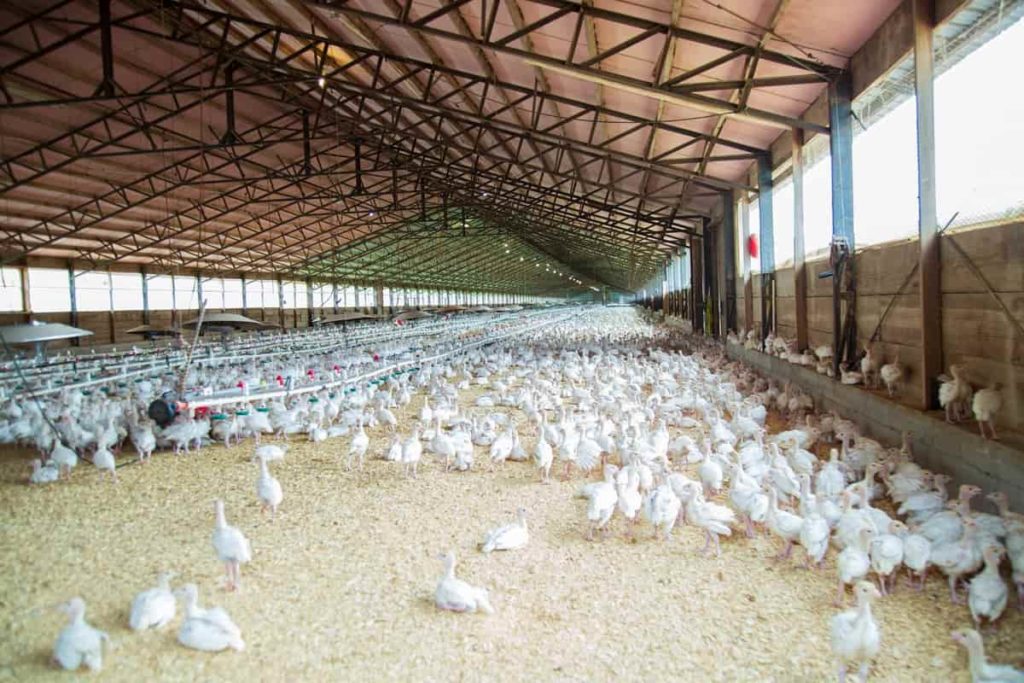
Financial assistance
The subsidy scheme will provide Rs. 5 lakhs to the beneficiary so that he can buy 2 water feeders, 2 feeders for poultry. Rs 1.5 million is required to raise 50,000 chickens for 10 days. Therefore, the government will provide all the funds for the establishment of poultry.
Total budget
To improve poultry farming, the government has allocated Rs. 3 million under the scheme. Some of the salient features of the poultry scheme are;
Poultry unit’s establishment scheme: It is a credit-based scheme in which commercial banks will finance poultry units under agricultural finance. The state government has set a target of setting up 1000 poultry units in the state under the scheme. The Haryana Department of Animal Husbandry provides marketing facilities for poultry and its products.
Scheme for establishment of poultry units
Animal Husbandry plays a vital role in generating income for the agricultural sector, which is the backbone of the Indian economy. The Haryana government has proposed to set up poultry units in all the districts of the state to increase poultry production in the state and make poultry farming more profitable. The poultry unit’s establishment scheme will provide self-employment opportunities as the unemployed will be assisted through the establishment of poultry units.
Objectives of the Scheme for creating new poultry units
The main objectives of creating new poultry units can be given below;
- Through poultry farming activities create self-employment opportunities.
- Upgradation and development of available poultry breeds in the state.
- To increase income-generating opportunities for the economically weaker sections of the society.
- Improving the nutritional status of beneficiaries and their families.
Eligibility criteria
To participate in the scheme, the applicant must meet the following conditions.
- The applicant must be unemployed from a rural area and must be a resident of the state of Haryana.
- The applicant must belong to the Below Poverty Line (BPL) category for this scheme.
- The applicant or the applicant’s family member should not be part of any government or semi-government contracts.
- Applicants with more than 2.5 acres of land are not eligible.
- Families who have a livestock housing facility but no cattle are eligible to apply for this scheme.
Initiatives to promote the development of the poultry industry
There are some initiatives to promote the development of the poultry industry in India.
- The poultry industry in India is constantly evolving due to the use of modern technology and the transformation of live birds into fresh cold and frozen poultry products market.
- A new path began with integrated poultry operations across India. Policies that ensure the supply of maize and soybeans at competitive prices.
- Increasing per capita consumption of 1 egg or 50 grams of chicken meat will create approximately 25,000 additional jobs which will create employment opportunities for the youth.
- In the poultry sector, the latest trend is to produce designer eggs in India. These are organic eggs rich in omega 3 fatty acids and low in saturated fats and low cholesterol.
- How to Make Houseplants Bushy: Effective Tips and Ideas
- Innovative Strategies for Boosting Coconut Pollination and Yield
- Pollination Strategies for Maximum Pumpkin Yield
- The Complete Guide to Chicken Fattening: Strategies for Maximum Growth
- Natural Solutions for Tulip Problems: 100% Effective Remedies for Leaf and Bulb-Related Issues
- Revolutionizing Citrus Preservation: Towards a Healthier, Greener Future
- Natural Solutions for Peony Leaf and Flower Problems: 100% Effective Remedies
- Maximizing Profits with Avocado Contract Farming in India: A Comprehensive Guide
- Natural Solutions for Hydrangea Problems: 100% Effective Remedies for Leaf and Flowers
- The Ultimate Guide to Choosing the Perfect Foliage Friend: Bringing Life Indoors
- From Sunlight to Sustainability: 15 Ways to Use Solar Technology in Agriculture
- The Ultimate Guide to Dong Tao Chicken: Exploring from History to Raising
- The Eco-Friendly Makeover: How to Convert Your Unused Swimming Pool into a Fish Pond
- Mastering the Art of Delaware Chicken Farming: Essentials for Healthy Backyard Flocks
- 20 Best Homemade Fertilizers for Money Plant: DIY Recipes and Application Methods
- How to Craft a Comprehensive Free-Range Chicken Farming Business Plan
- Brighten Your Flock: Raising Easter Egger Chickens for Beauty and Bounty
- How to Optimize Your Poultry Egg Farm Business Plan with These Strategies
- Subsidy for Spirulina Cultivation: How Indian Government Schemes Encouraging Spirulina Farmers
- Ultimate Guide to Raising Dominique Chickens: Breeding, Feeding, Egg-Production, and Care
- Mastering the Art of Raising Jersey Giant Chickens: Care, Feeding, and More
- Ultimate Guide to Raising Legbar Chickens: Breeding, Farming Practices, Diet, Egg-Production
- How to Raise Welsummer Chickens: A Comprehensive Guide for Beginners
- How to Protect Indoor Plants in Winter: A Comprehensive Guide
- Ultimate Guide to Grow Bag Gardening: Tips, Tricks, and Planting Ideas for Urban Gardeners
- Guide to Lotus Cultivation: How to Propagate, Plant, Grow, Care, Cost, and Profit
- Agriculture Drone Subsidy Scheme: Government Kisan Subsidy, License, and How to Apply Online
- Ultimate Guide to Raising Araucana Chickens: Breed Profile, Farming Economics, Diet, and Care
- Bringing Hydroponics to Classroom: Importance, Benefits of Learning for School Students
- Ultimate Guide to Raising Polish Chickens: Breed Profile, Farming Economics, Diet, and Care
- Ultimate Guide to Raising Australorp Chickens: Profile, Farming Economics, Egg Production, Diet, and Care
- Silkie Chicken Farming: Raising Practices, Varieties, Egg Production, Diet, and Care
- Sussex Chicken Farming: Raising Practices, Varieties, Egg Production, Diet and Care
- Homemade Feed Formulations for Livestock: Discover Cost-effective Starter to Finisher Feed Recipes
- 20 Best Pig Weight Gain Supplements: Top Swine Weight Gain Formulas
- Ultimate Guide to Elderberry Farming: Propagation, Planting, Yield, Cost, and Profit